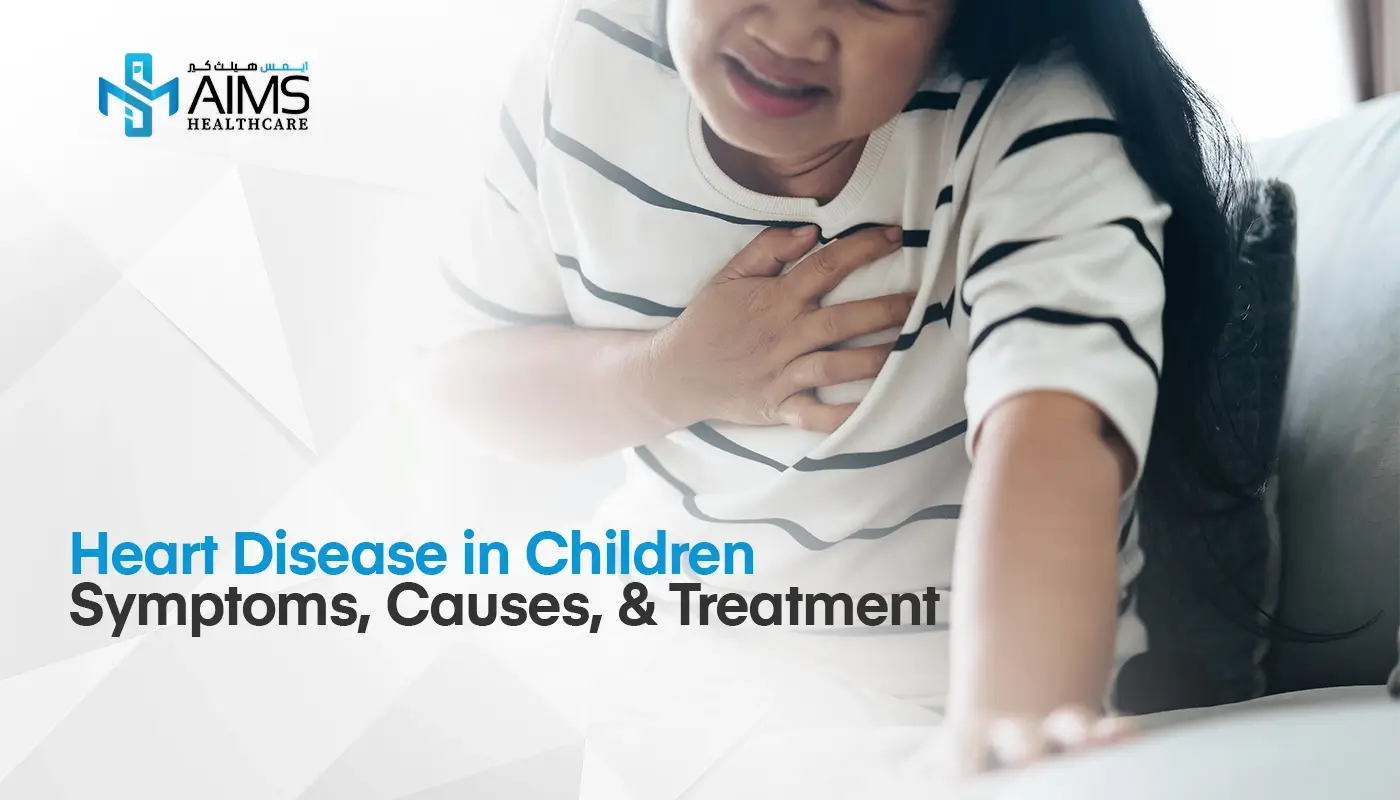
At-Home Fertility Test for Men – A Complete Guide
Table of Contents Having your semen tested at home is the best way to know whether you’re fertile. With at-home testing, you can check how

Our hearts are like our body’s engines, keeping us going day in and day out. And when it comes to our little ones, nothing’s more special than their hearts – not just for pumping love, but for staying healthy.
You might think that heart diseases are something grown-ups deal with, but guess what?
Kids can have them, too!
It might sound scary, but don’t worry. We’re here to help you understand what kinds of heart problems kids can have, how doctors determine what’s going on, and how to improve things.
In this blog, we will examine the different types of heart problems that can affect kids. We’ll explain how doctors find out if there’s a problem and what they can do to help. Whether you’re a parent, a caregiver, or just curious, we want to ensure you have the info you need to support those brave little hearts. Let’s dive in and learn together how to keep those tiny tickers strong and healthy!
Heart disease is a broad term that refers to any condition that affects the structure or function of the heart.
Before we get into the nitty-gritty of diagnosing and treating heart problems in children, let’s talk about some of the most common types:
Heart disease in children can be classified into three main types:
Congenital heart defects are problems with the heart’s structure that are present at birth. They occur when the heart or blood vessels near the heart do not develop normally during fetal development. Congenital heart defects can affect the way blood flows through the heart and to the rest of the body.
Congenital heart defects are the most common birth defects, affecting approximately 1 in every 100 newborns.

Congenital heart defects are the most common birth defects, affecting approximately 1 in every 100 newborns.
Some examples of congenital heart defects are:
Some congenital heart defects are mild and may not cause any symptoms or complications. Others are more severe and may require surgery or other interventions to correct them. Congenital heart defects are the most common type of congenital disability, affecting about 1% of newborns.
Acquired heart disease is a type of heart disease that develops after birth, usually as a result of an infection, an immune system disorder, or an inflammation. Acquired heart disease can damage the heart muscle, the valves, or the lining of the heart. Some examples of acquired heart disease are:
Acquired heart disease can affect the heart’s ability to pump blood effectively and may lead to heart failure, arrhythmias, or other complications. Acquired heart disease is less common than congenital heart defects, but it can affect children of any age.
Arrhythmias are abnormal heart rhythms that occur when the electrical signals that control the heartbeat are disrupted. Arrhythmias can cause the heart to beat too fast, too slow, or irregularly. Some examples of arrhythmias are:
Arrhythmias can affect the blood flow to the organs and tissues and may cause symptoms such as dizziness, fainting, or chest pain. Some arrhythmias are harmless and do not require treatment, while others are serious and may lead to cardiac arrest or sudden death. Arrhythmias can be caused by congenital heart defects, acquired heart disease, electrolyte imbalances, medications, or other factors.
The signs and symptoms of heart disease in children may vary depending on the type, severity, and duration of the condition. However, some general signs and symptoms that may indicate a heart problem in children are:
If your child has any of these signs and symptoms, you should consult a doctor as soon as possible, as they may indicate a serious or life-threatening condition. Do not ignore or delay seeking medical attention, as early diagnosis and treatment can improve the outcome and prognosis of heart disease in children.

The causes and risk factors of heart disease in children may differ depending on the type of heart disease. However, some common causes and risk factors that may contribute to the development of heart disease in children are:
To prevent or reduce the risk of heart disease in children, you should follow some tips and advice, such as:
The diagnosis and treatment of heart disease in children may depend on the type, severity, and duration of the condition. However, some common methods and tests used to diagnose and treat heart disease in children are:
Medical history: Asking the child and the parents or caregivers about the child’s symptoms, health problems, family history, and lifestyle habits.
The treatment options and strategies for heart disease in children may vary depending on the type, severity, and duration of the condition. However, some common treatment options and strategies for heart disease in children are:
Prescribing drugs can help control the symptoms, prevent complications, or treat the underlying cause of the heart disease. Some examples of medications used for heart disease in children are:
Operating to repair or replace a damaged or defective part of the heart or blood vessels. Some examples of surgeries used for heart disease in children are:
Your child’s well-being is of utmost importance, and being informed about potential heart issues can make a significant difference in their health and quality of life.
If you suspect that your child may be suffering from a heart condition, it’s imperative to consult with a pediatrician or a pediatric cardiologist. Aims Healthcare offers doctor-on-call in Dubai, home health care in Dubai, and lab test at-home services, making it easier for you to access essential medical care without the hassle of visiting a hospital or clinic. It provides you with the convenience of receiving medical care in the comfort of your own home, making it easier to manage your child’s health, especially if they have a heart condition.
Prioritizing the heart health of our children is of utmost importance. By staying informed about the types of heart diseases that can affect them, seeking timely diagnosis and treatment, and taking advantage of convenient healthcare services like those offered by Aims Healthcare, you can ensure that your children have the best chance for a healthy and happy future.
Provide an overview of prevalent heart conditions affecting children, such as congenital heart defects, arrhythmias, and cardiomyopathies.
Heart disease in children is identified via echocardiograms, electrocardiograms (ECGs or EKGs), chest X-rays, and other imaging studies. Explain the importance of early detection for effective treatment.
Enumerate the signs and symptoms that parents and caregivers should be aware of, such as difficulty in breathing, poor growth, fatigue, and abnormal heart rhythms.
The treatment modalities may include medication, surgery, catheter-based interventions, and lifestyle modifications.
Parents and caregivers can provide emotional support and create a nurturing environment for a child with heart disease. Discuss lifestyle considerations, the importance of medication adherence, and the role of regular follow-up appointments in maintaining a child’s heart health.

Table of Contents Having your semen tested at home is the best way to know whether you’re fertile. With at-home testing, you can check how

Table of Contents Healthy Fasting, Happy Digestion! Explore Tips for a Smooth Ramadan. As the holy month approaches, fasting holds significant spiritual and cultural importance

Table of Contents Healthy Fasting, Happy Digestion! Explore Tips for a Smooth Ramadan. As the holy month approaches, fasting holds significant spiritual and cultural importance